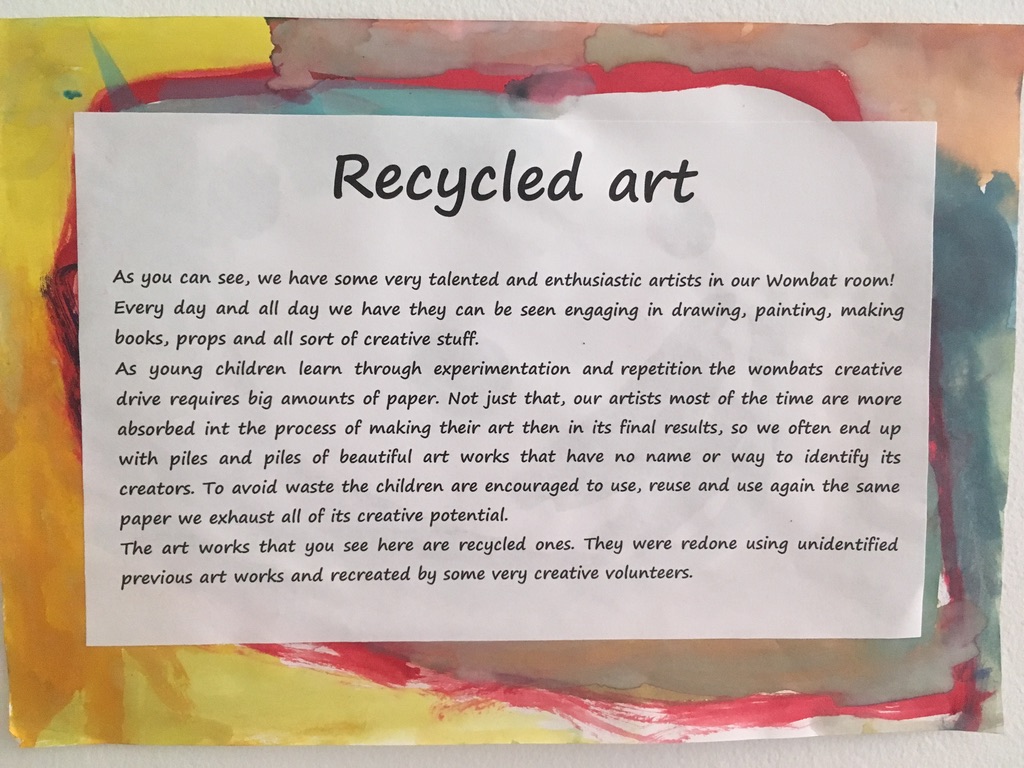Making the most of this creative resource
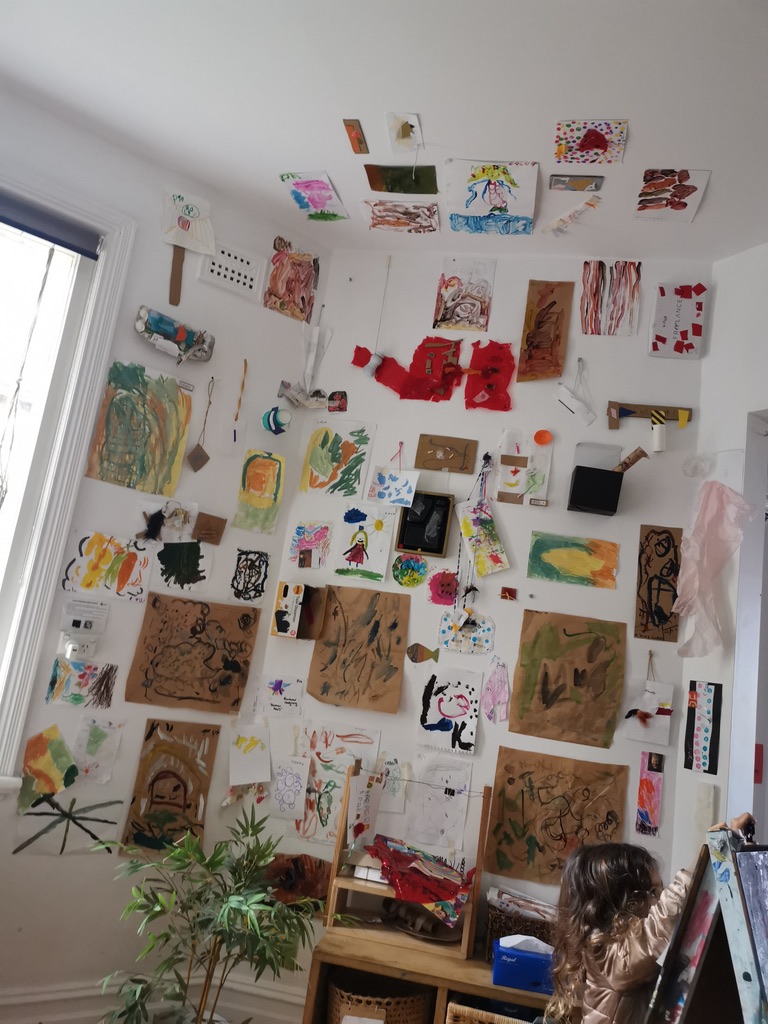
In my class, we have some very talented and enthusiastic artists who like to spend a good chunk of their day at our creation station. There they draw, paint, write, make books, and create all sorts of props for their play, all day and every day. These amazing creators are not just interested in exploring materials and their possibilities but also in learning how to use tools such as staplers, rulers, and hole punches. As young children learn through experimentation and repetition, their creative drive requires huge amounts of paper. To keep up with the high demand and avoid waste, we teach children to use paper more sustainably.
How? We encourage children to conscientiously make good use of this resource by:
- learning where paper comes from and how it is made,
- discussing the importance of not wasting this resource
- Encouraging them to use both sides of the paper and reuse it until they exhaust all the creative possibilities of the material.
Once the paper is used to its full capacity, we either make our own recycled paper or put it in the recycling bin
Learning where paper comes from
Where does paper come from? How does it is made?
These are the first questions we discuss with children when we start to talk about the importance of using paper sustainably.
By learning where paper comes from and how it is made, children can better understand the importance of using it more consciously to avoid waste.
When children learn that to produce paper, we need to cut trees; they start to understand that paper doesn’t simply appear in our class by magic. The paper gains more value as we learn that it needs to go through a long process to become available for us to consume.
“Investigating and learning the origin of things can help us to see the big picture and establish full connections about how products are made and the true cost behind them.This knowledge can set us free from the cycle of mindless consumerism and disposal that surrounds us in modern society. It can help to challenge the illusion that products magically appear in stores and magically disappear when we throw them away.” Beatriz Ferreira
Reusing it once
Most of the paper we for our day-to-day projects, are pre-loved. These are papers that have already been used for other purposes but still offers many creative possibilities.
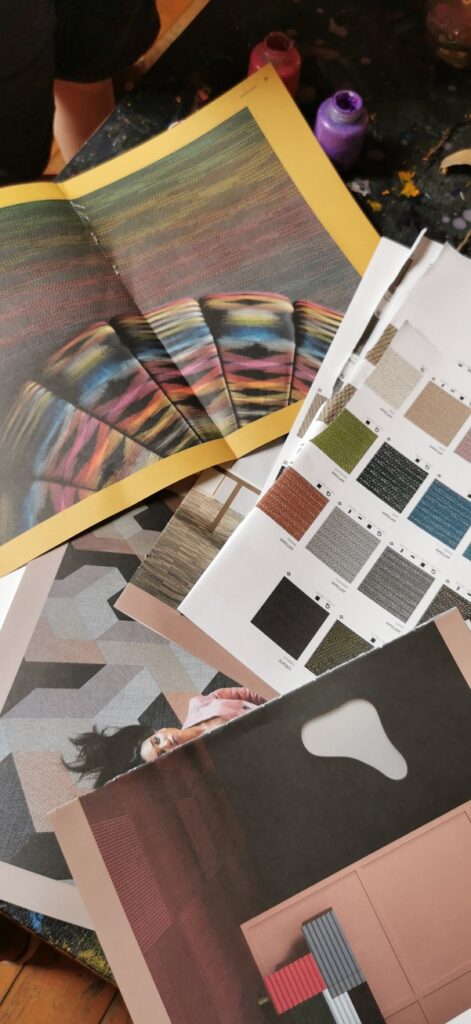
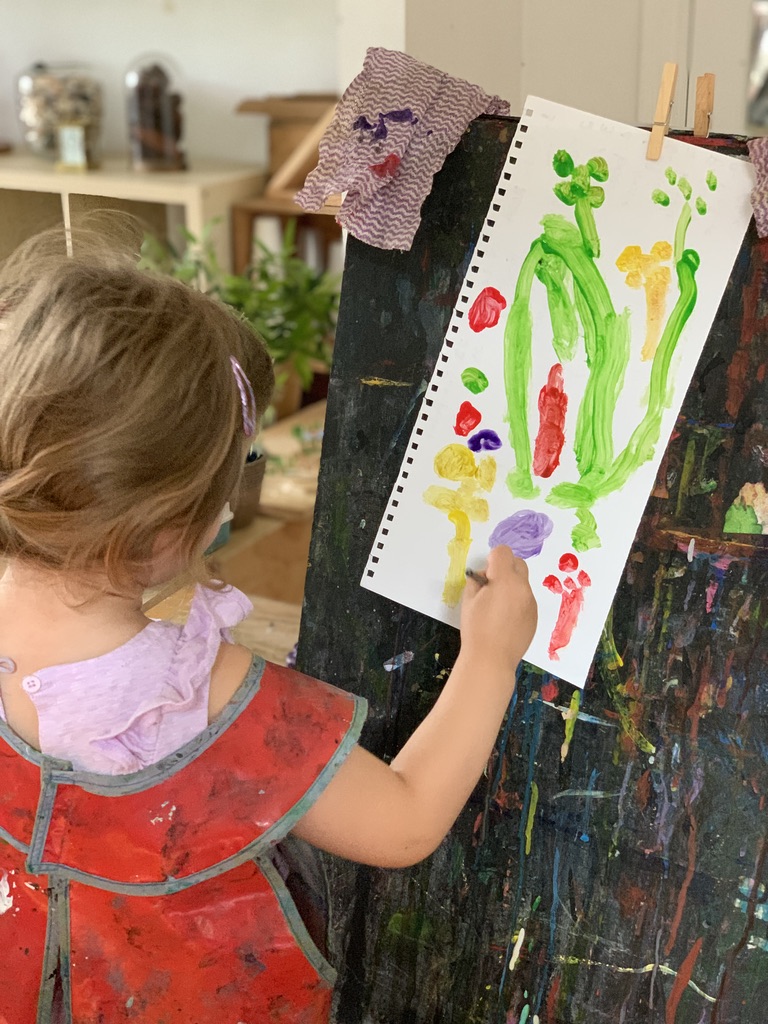
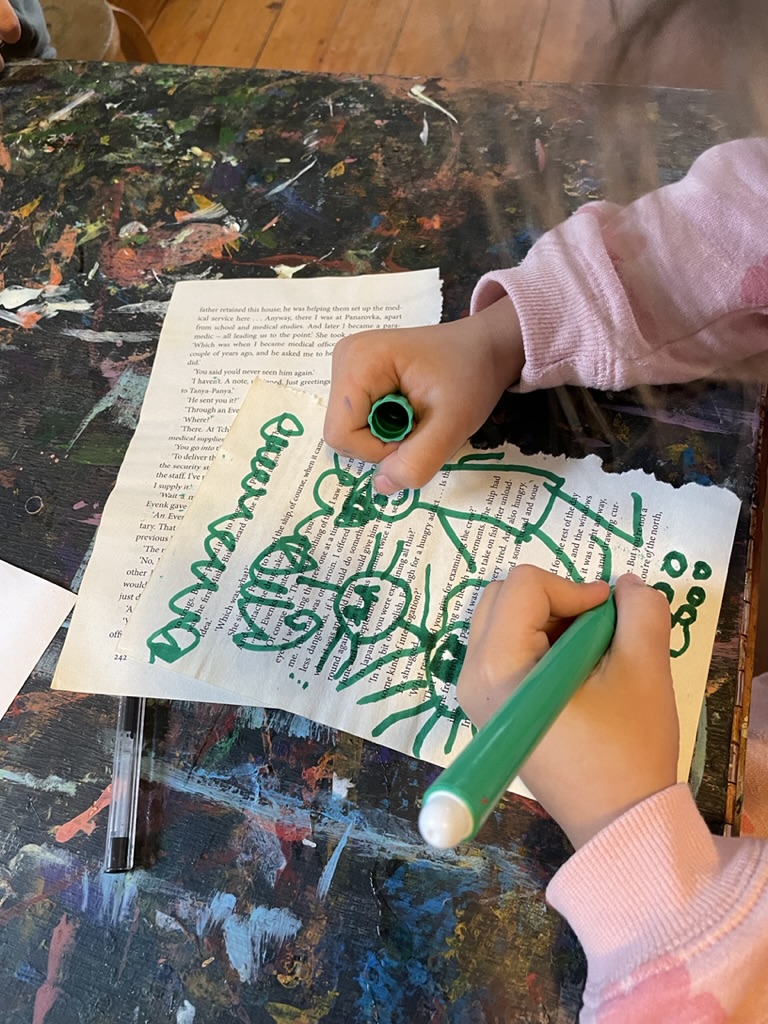
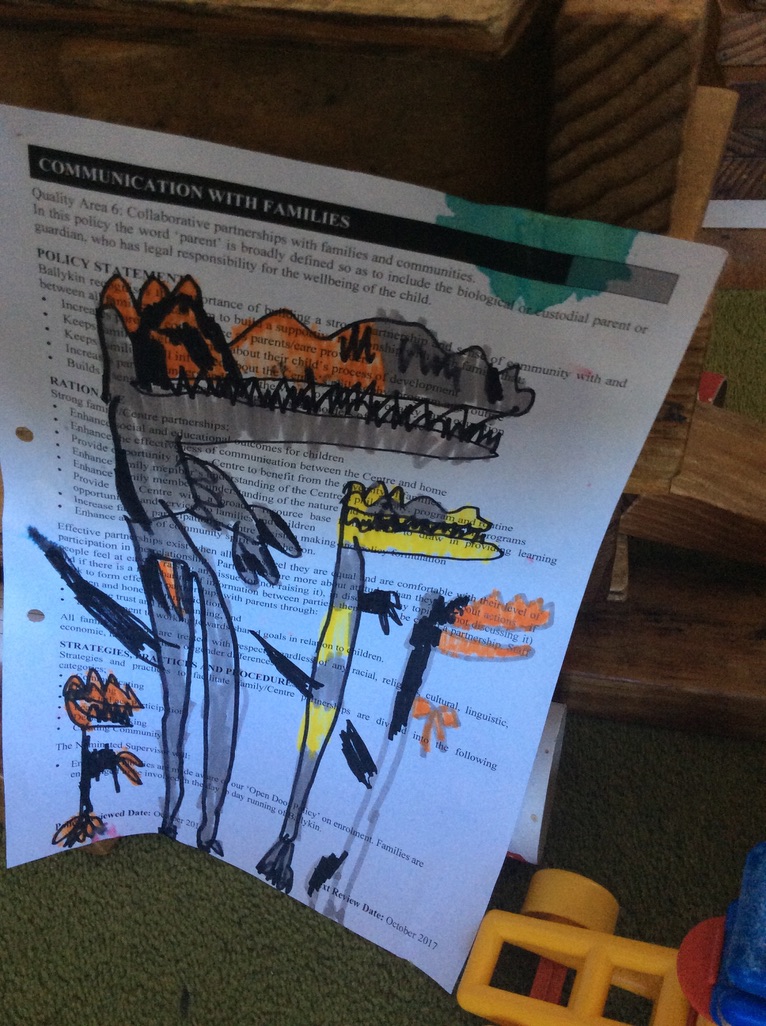
Reusing it twice!
After being used and reused the anonymous unclaimed artworks are given one more creative chance and go to a basket for folding ( origami) projects. That allows us to reuse them once again and give another extra life to these papers:)
Observation, attentive listening, ability to follow instructions and fine motor skills are practiced during our folding session. Paper aeroplanes and fans are always popular choices here.
“We need to save trees because they are a part of nature, and without trees, we can’t breathe” explained Bowie…
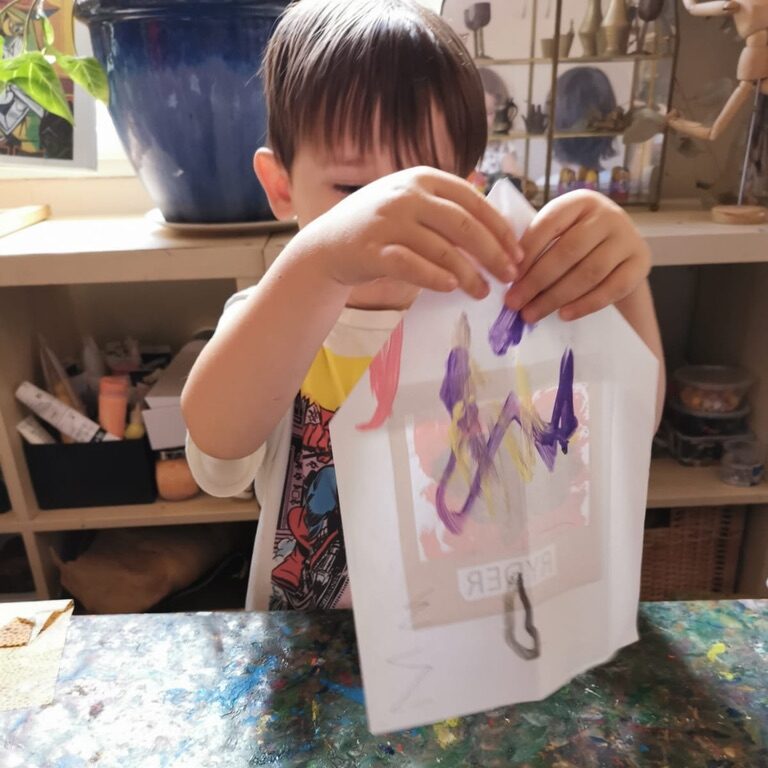
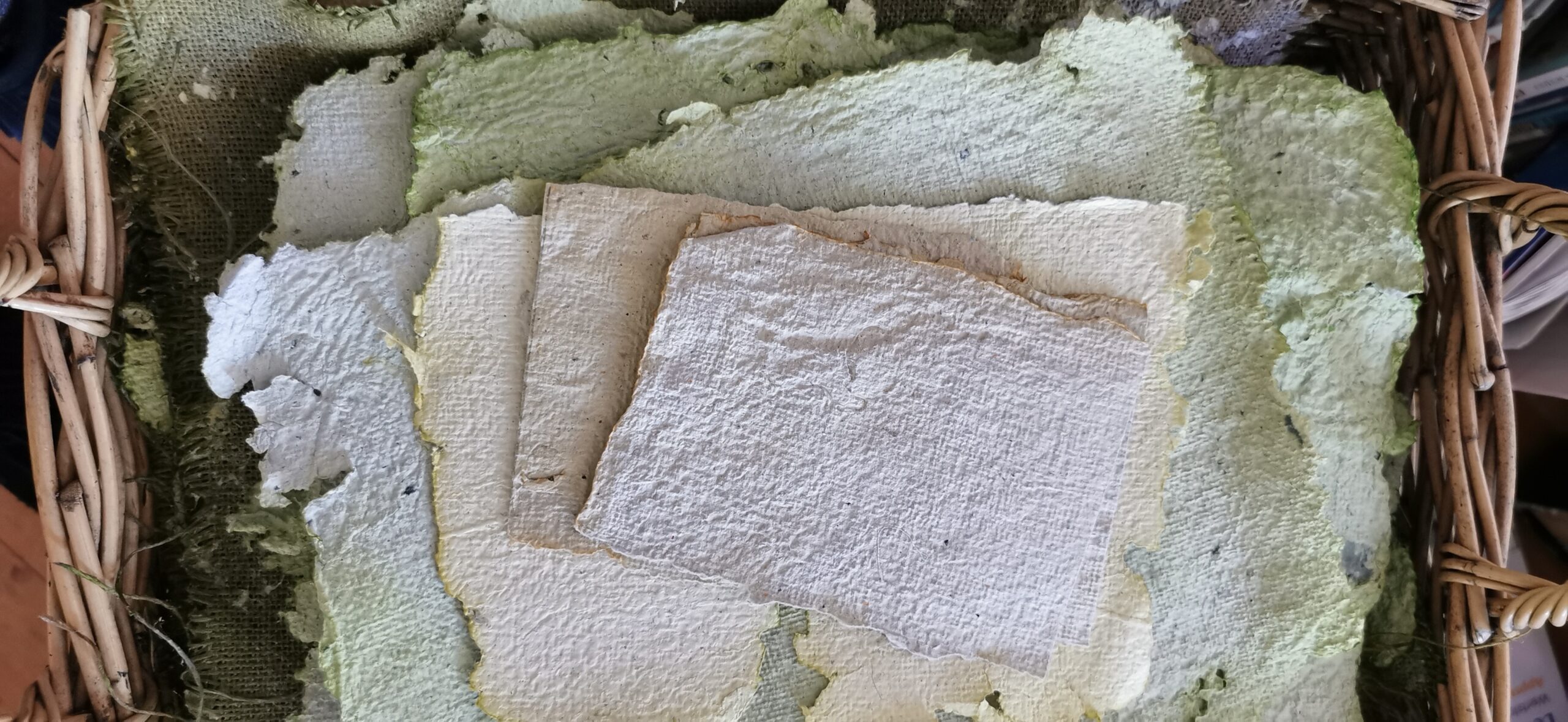
Making our very own recycled paper
The last stage of our sustainable cycle is to make new paper out of all these very well-loved sheets.
Here is how we do it:
1. We keep a container to collect all the unwanted paper
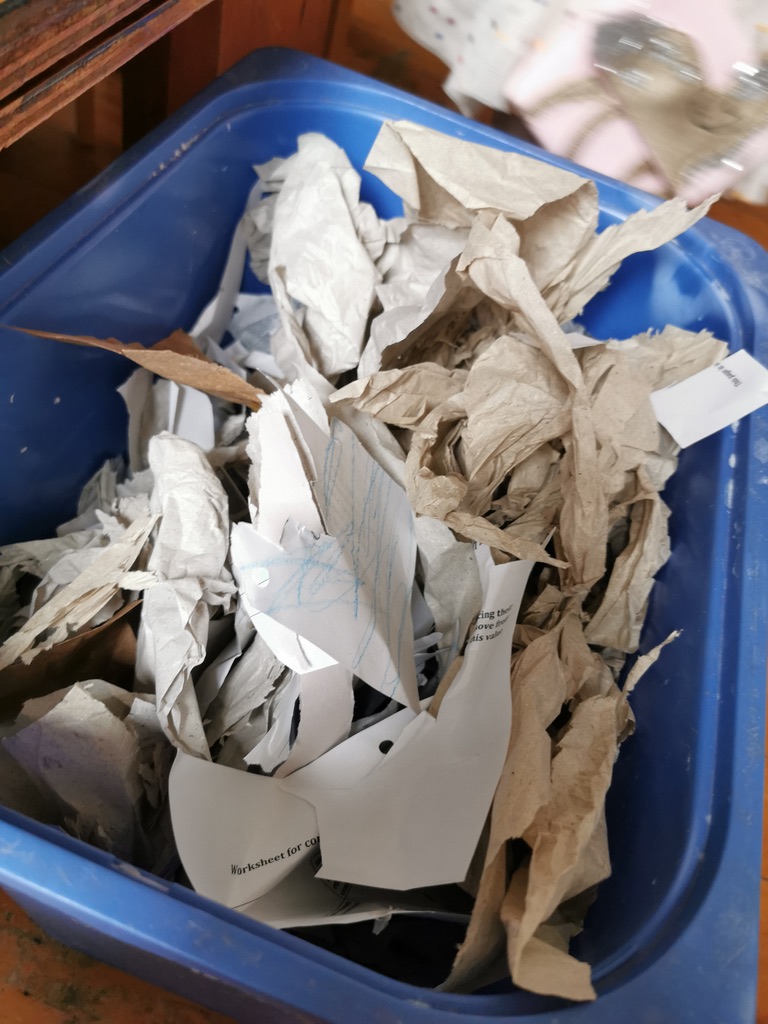
2. We tear the unwanted paper into small pieces and leave them in a container with water soak over a few days.
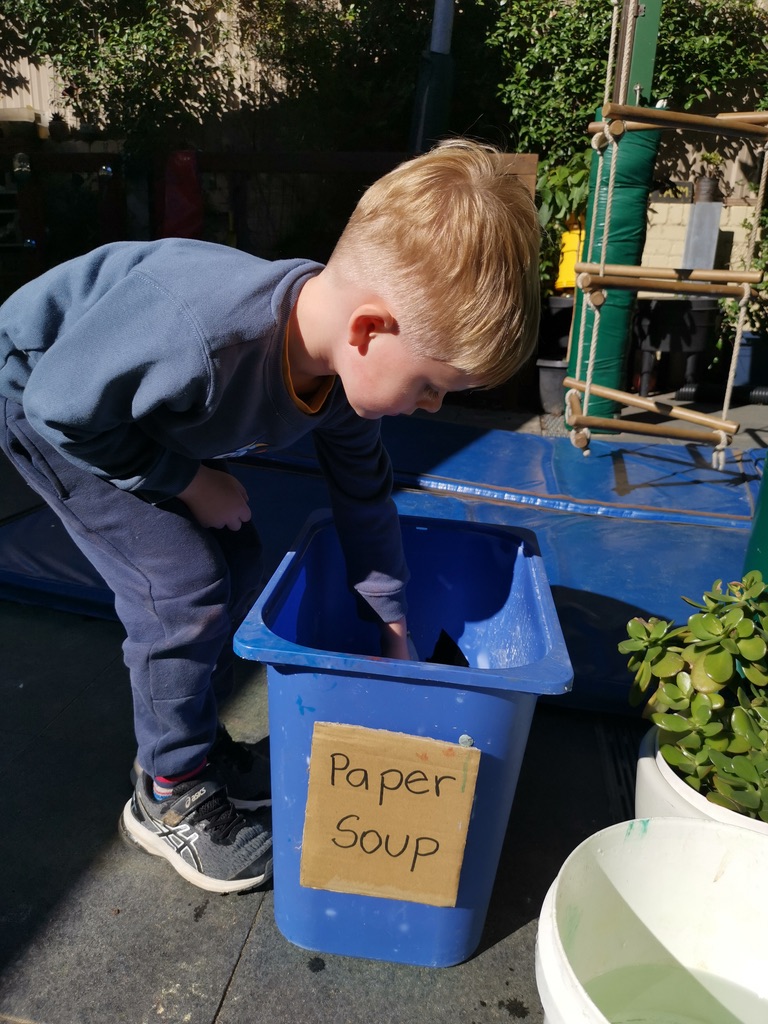
3. Once the paper becomes nice and soft, we scoop this paper mash and put it into a blender with water.
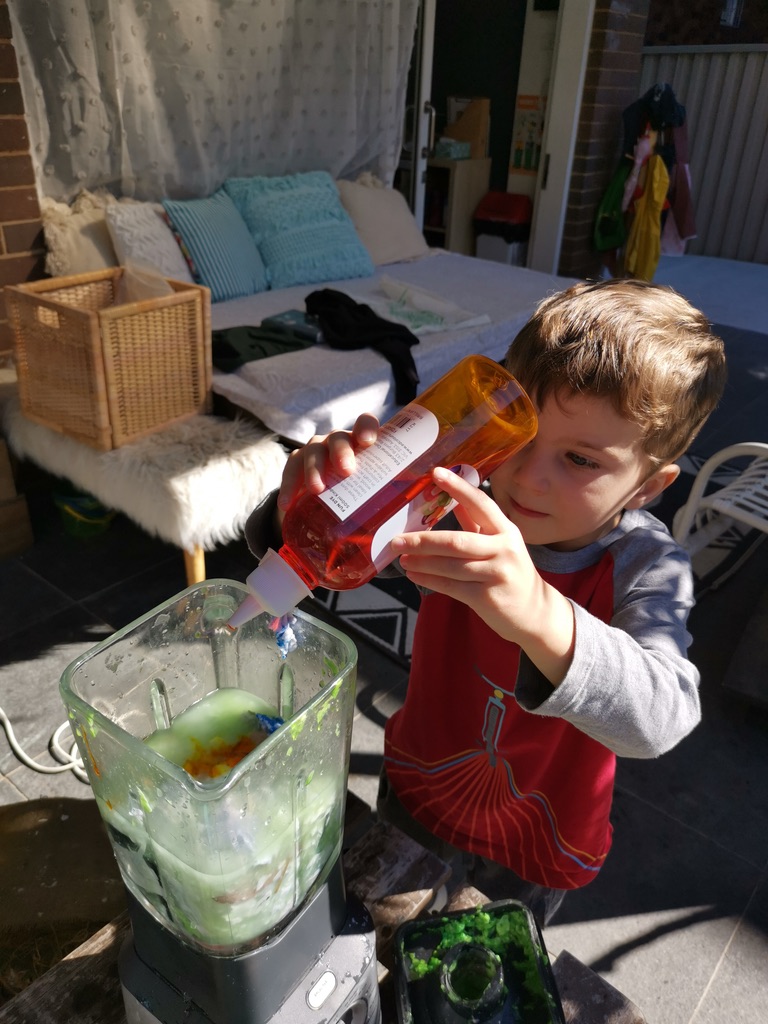
4. We blend until the mixture becomes pulp.
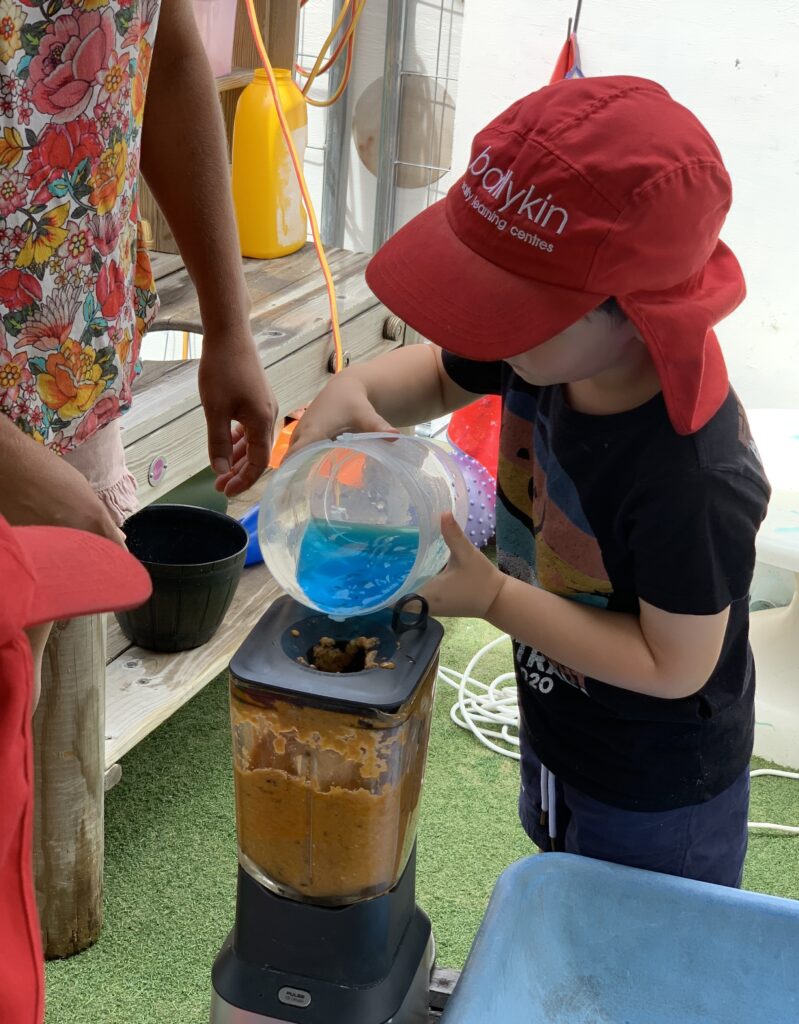
5. We pour the pulp into a tray with water and mix using our hands.
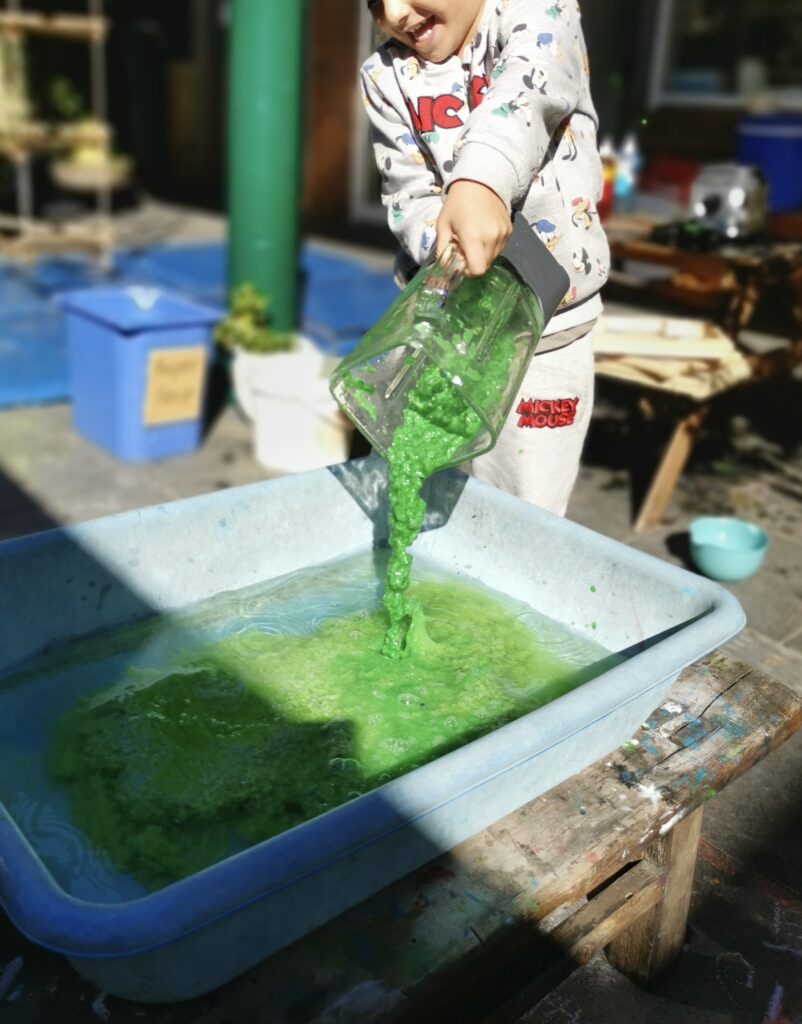
6. We sink the paper frame into the water mixture until it fully covers the screen.
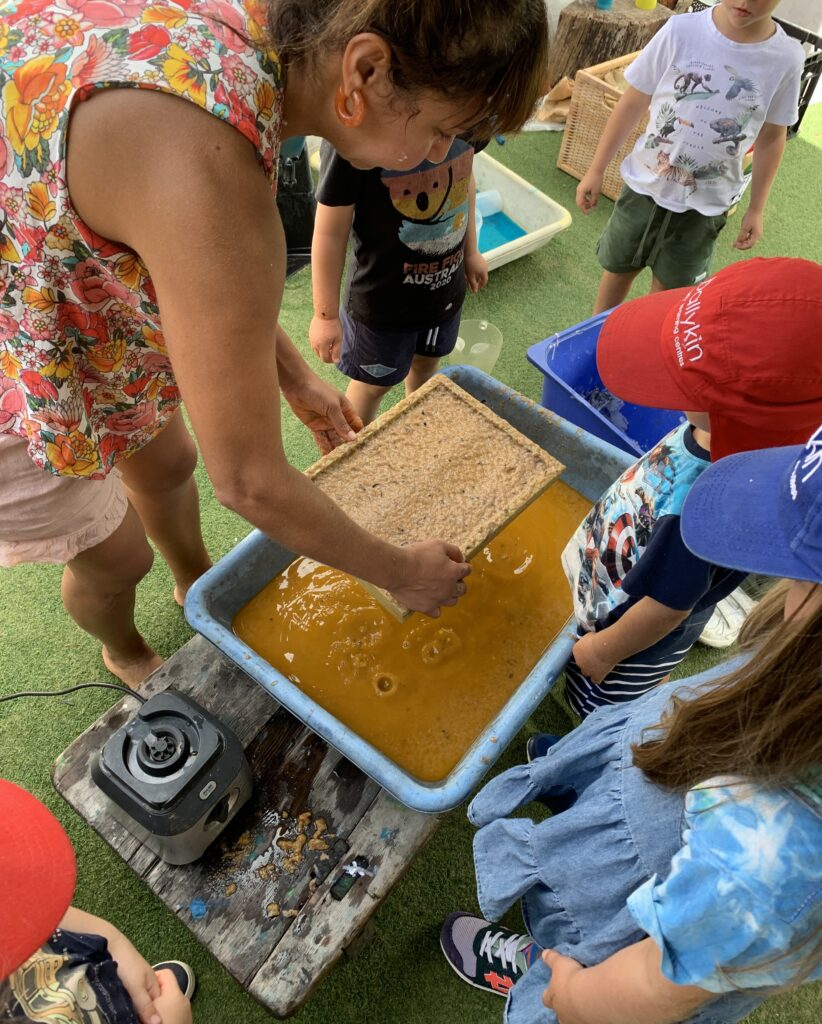
7. We take the frame out and cover it with a piece of burlap and press to take the excess water.
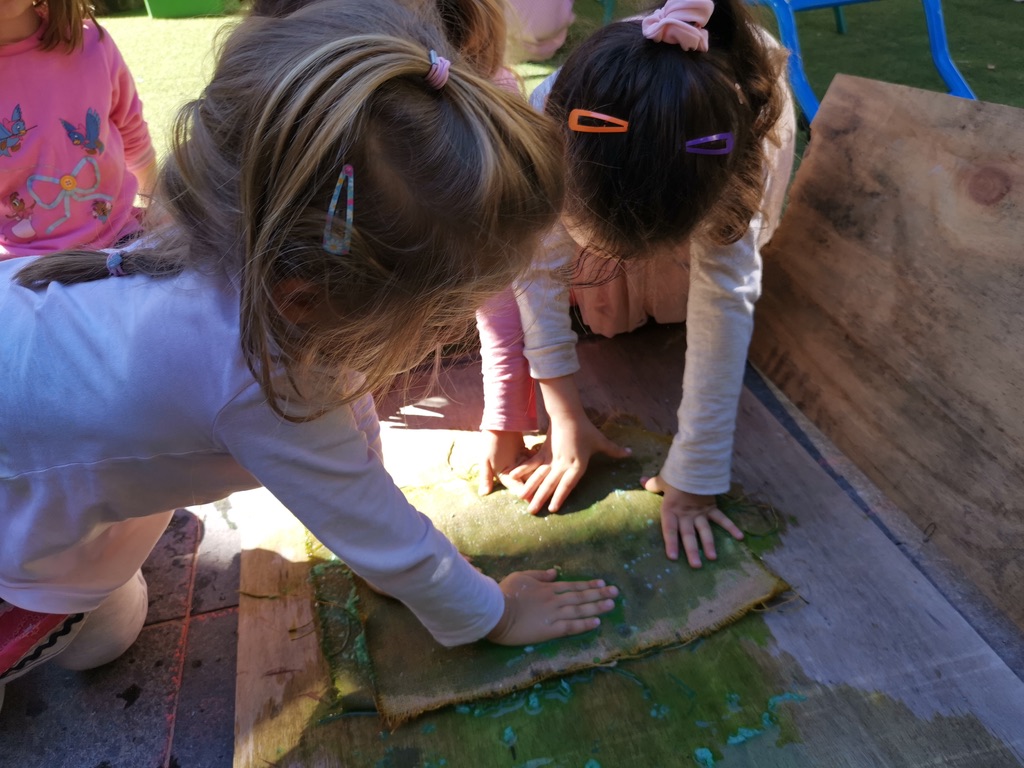
8. We put the paper between two wood to flatten and squeeze the water out
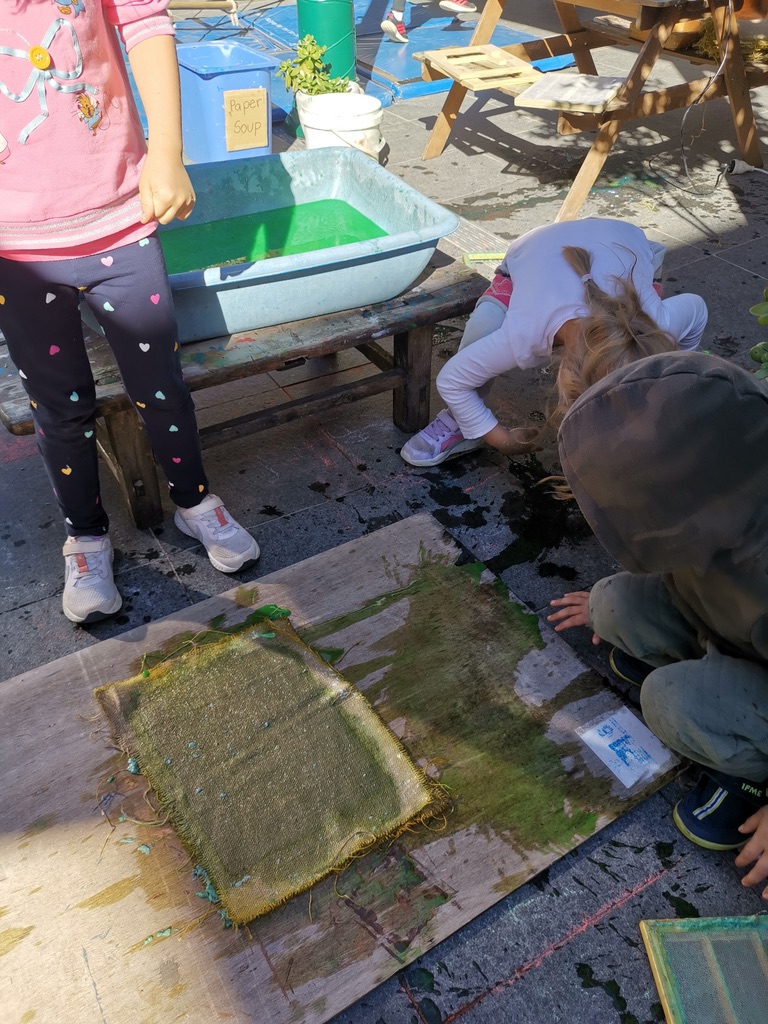
9. We let the paper dry.
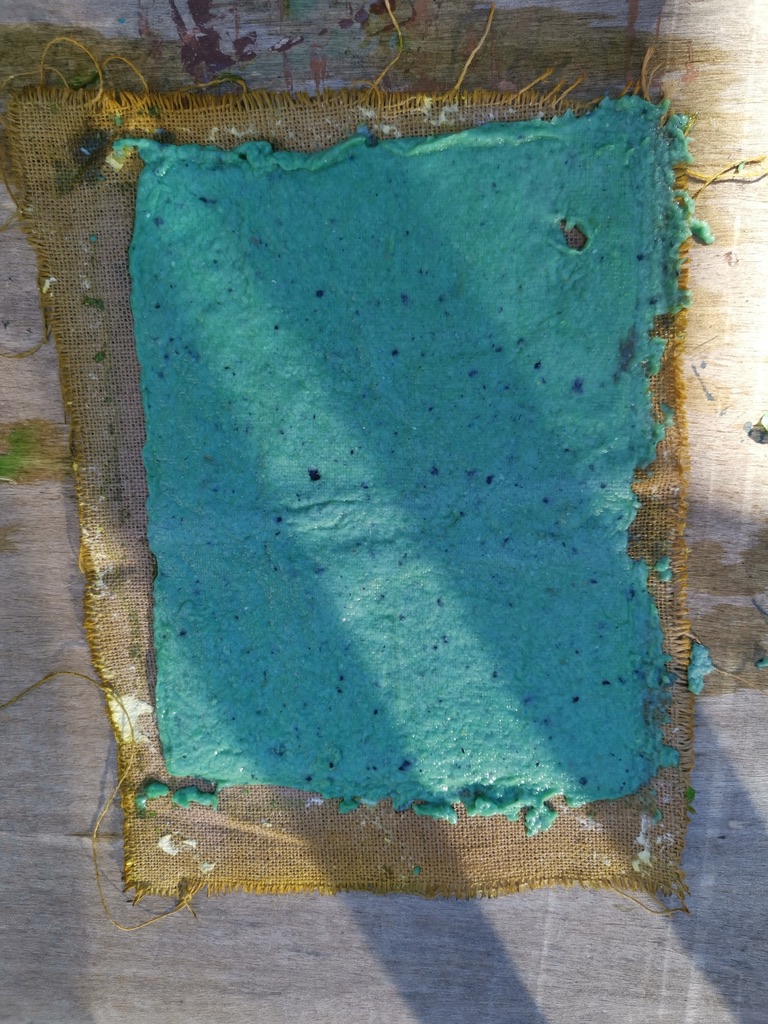
By learning about why and how to make good use of this resource conscientiously, children are encouraged to engage in more sustainable patterns of living.
By developing their awareness of their impact in the environment and ways to minimise it, we empower children to take responsibility for their actions and contribute to their vision for a sustainable future. It enables them to develop knowledge, skills, values, and motivations for action, allowing them to maintain their own well-being – and that of their community and the planet – in an increasingly interconnected cycle.

